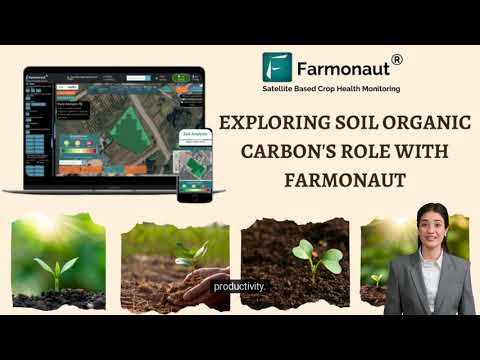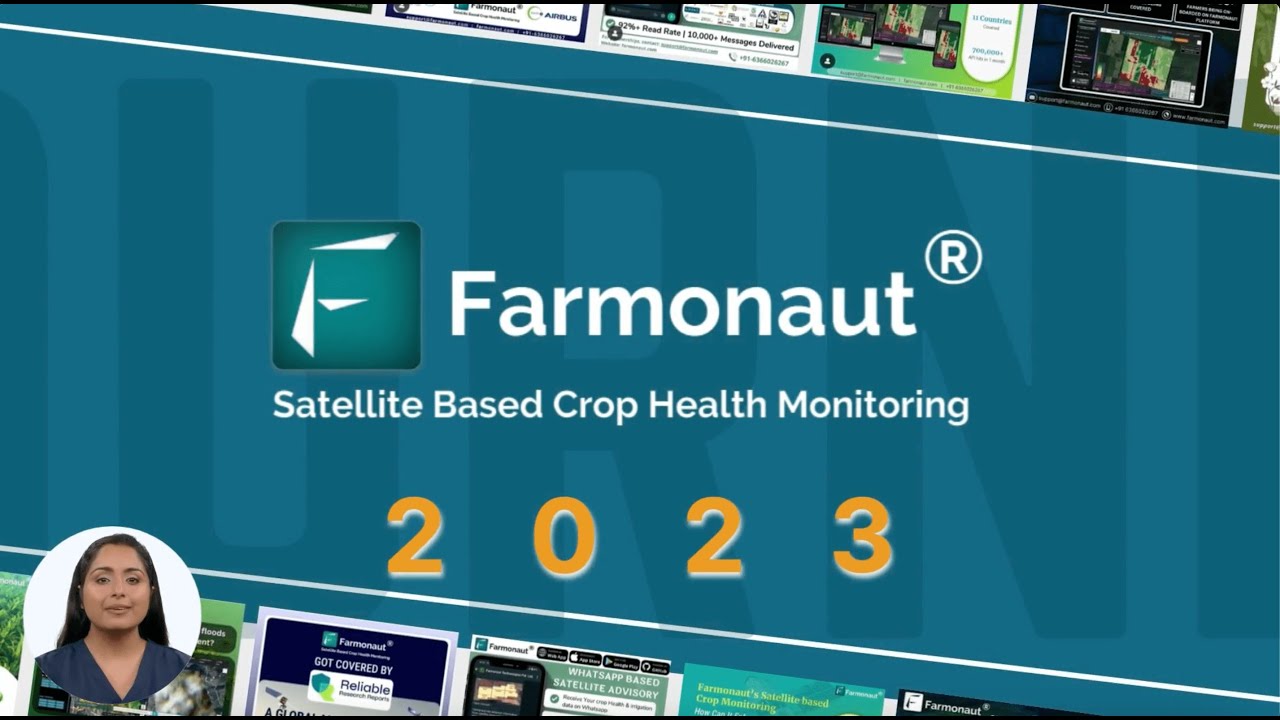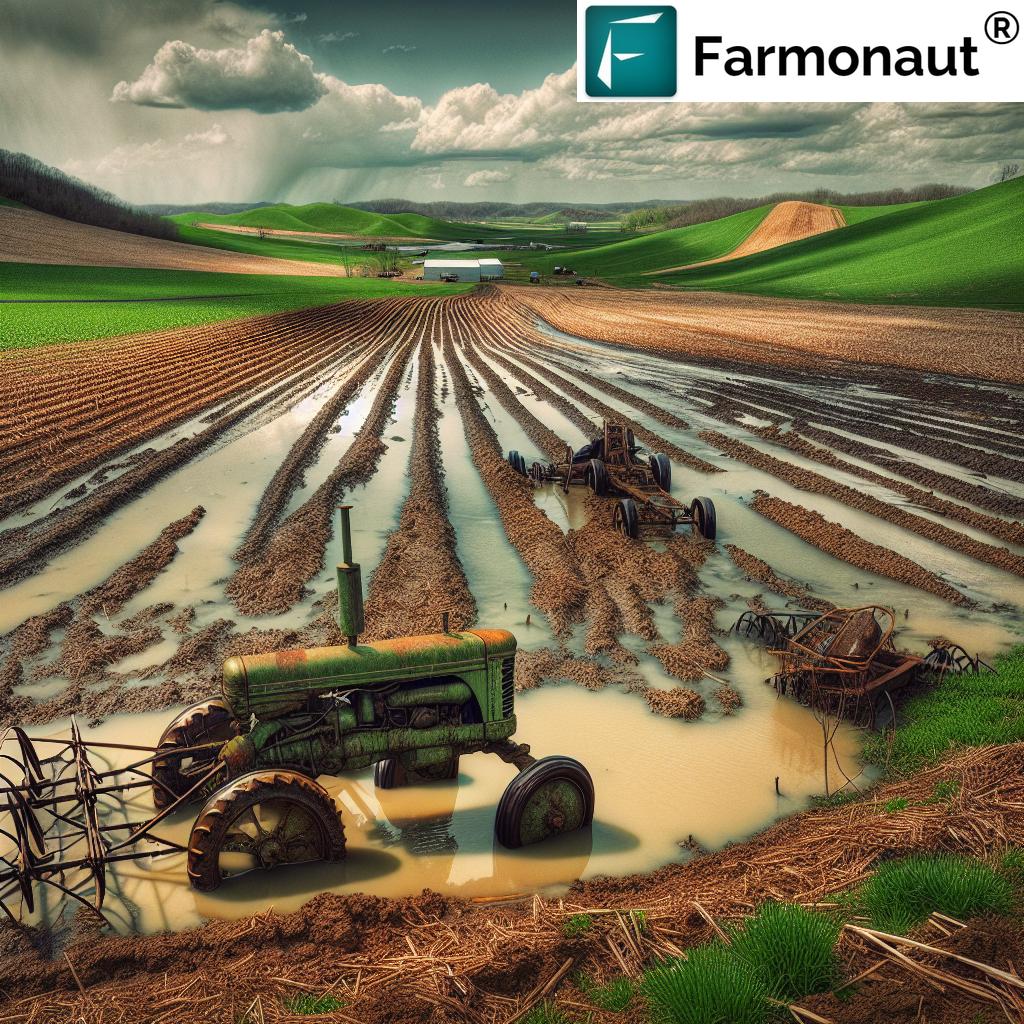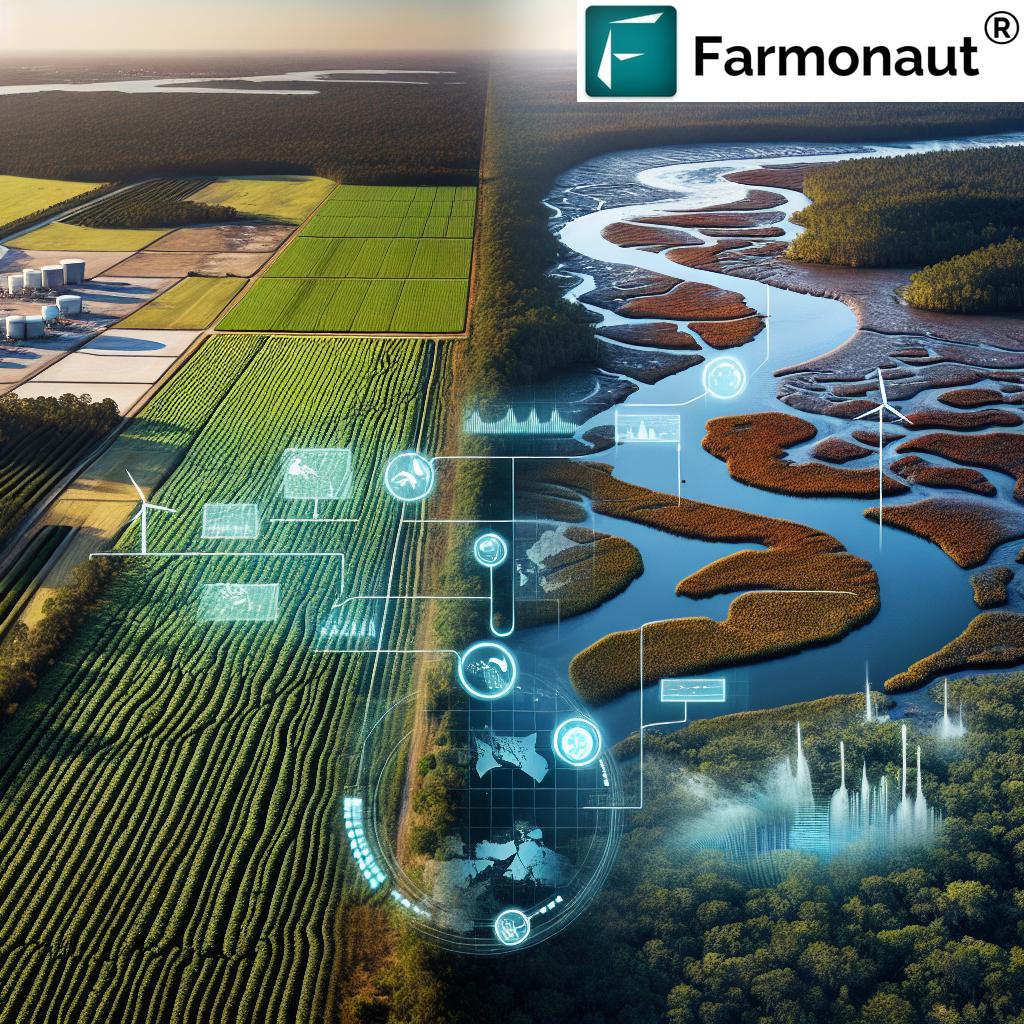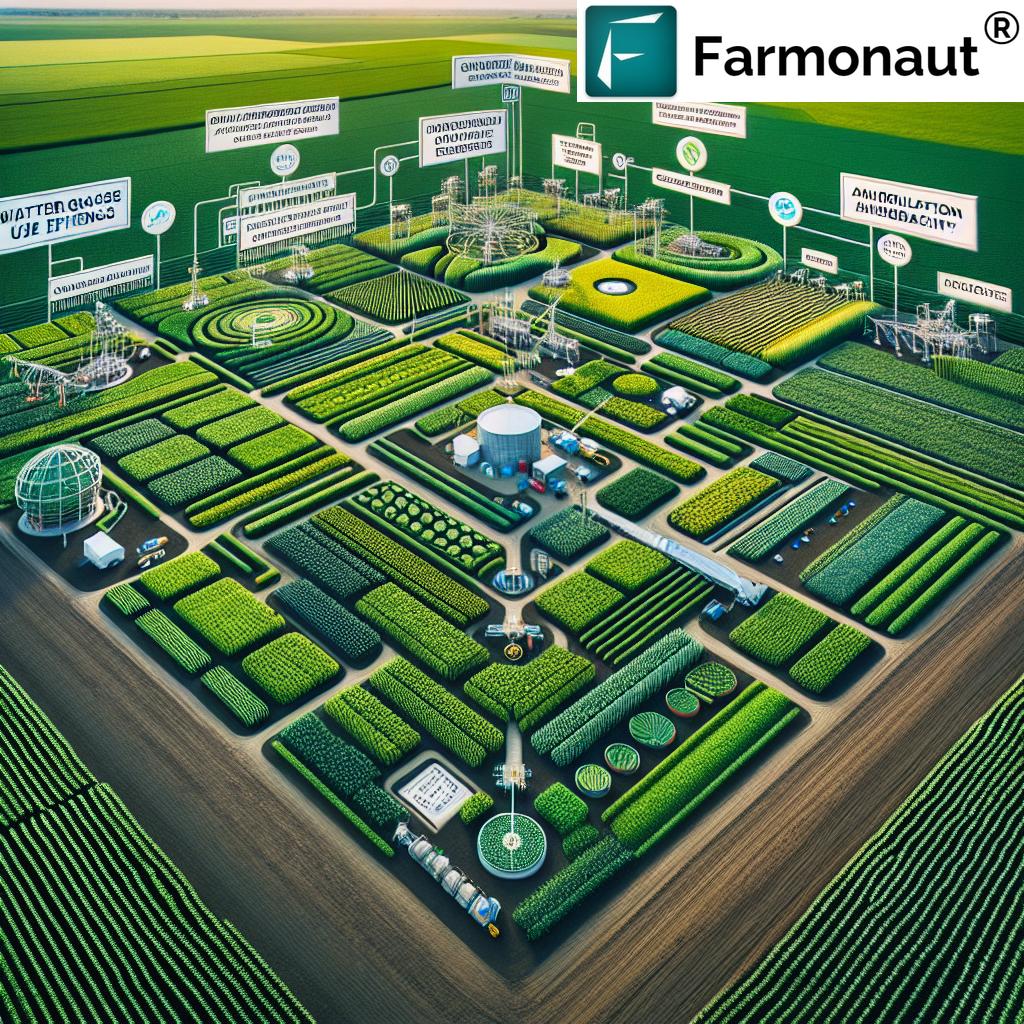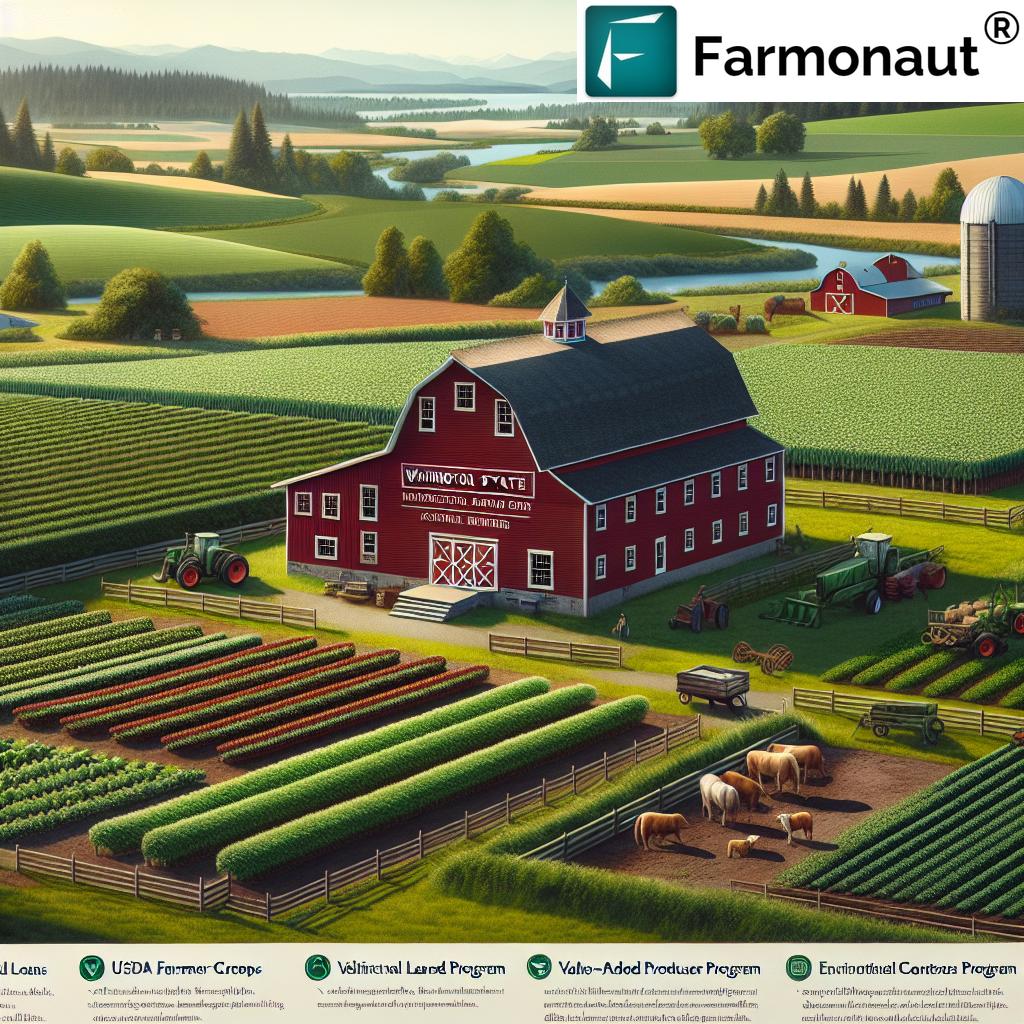Revolutionizing Wisconsin Corn Farming: Smart, Sustainable Practices for Optimizing Yield and Protecting Water Resources
“Wisconsin corn farming supports over 30,000 jobs and contributes $5 billion annually to the state’s economy.”
Welcome to the heartland of America, where the golden fields of corn stretch as far as the eye can see. We’re diving deep into the world of Wisconsin corn farming, exploring how sustainable practices are reshaping the agricultural landscape and bolstering the state’s economy. From the bustling farms to the innovative laboratories, we’ll uncover the multifaceted impact of corn cultivation in the Badger State.
The Cornerstones of Wisconsin’s Agricultural Economy
Wisconsin’s corn industry is more than just a staple of the state’s agriculture; it’s a powerhouse driving economic growth and innovation. Let’s explore the key aspects that make corn such a crucial crop for our state:
- Job Creation: The corn sector supports a diverse range of employment opportunities, from farm labor to agribusiness management.
- Economic Impact: With a $5 billion annual contribution, corn farming significantly bolsters Wisconsin’s economy.
- Renewable Energy: Corn-based ethanol production is at the forefront of the state’s renewable fuel initiatives.
- Livestock Feed: A substantial portion of Wisconsin’s corn crop goes towards feeding the state’s robust dairy and livestock industries.
- Food Production: From sweet corn to cornmeal, the versatility of corn in food products is unmatched.
As we delve deeper into the world of Wisconsin corn farming, we’ll explore how sustainable practices are not just preserving this vital industry, but propelling it into a future of increased productivity and environmental stewardship.
Smart Farming Techniques: The Future of Corn Cultivation
In the realm of Wisconsin agriculture, smart farming techniques are revolutionizing how we approach corn cultivation. These innovative methods are allowing farmers to optimize crop yields while significantly reducing their environmental footprint. Let’s explore some of the cutting-edge practices that are transforming cornfields across the state:
Precision Agriculture: Farming with Pinpoint Accuracy
Precision agriculture is at the forefront of smart farming techniques, leveraging technology to make data-driven decisions. Here’s how it’s changing the game for Wisconsin corn growers:
- GPS-guided planting and harvesting for optimal row spacing and reduced overlap
- Variable rate technology for precise application of fertilizers and pesticides
- Soil mapping to understand field variability and tailor inputs accordingly
- Yield monitoring systems to track productivity across different areas of the field
By implementing these precision agriculture techniques, Wisconsin farmers are seeing remarkable improvements in efficiency and yield. For instance, variable rate technology can lead to a 10-15% reduction in input costs while potentially increasing yields by 3-5%.
Satellite-Based Crop Monitoring: Eyes in the Sky for Healthier Corn
One of the most groundbreaking advancements in smart farming is the use of satellite technology for crop monitoring. This is where Farmonaut’s innovative platform comes into play, offering farmers unprecedented insights into their fields. Here’s how satellite-based monitoring is benefiting Wisconsin corn growers:
- Real-time vegetation health indices (NDVI) to track crop growth and stress
- Early detection of pest infestations and disease outbreaks
- Moisture level monitoring to optimize irrigation schedules
- Historical data analysis for long-term field performance assessment
With Farmonaut’s satellite-based crop health monitoring, farmers can make informed decisions about their corn crops, leading to more sustainable practices and improved yields. The platform’s user-friendly interface allows farmers to access crucial data right from their smartphones or computers, making precision agriculture more accessible than ever.
Explore Farmonaut’s innovative solutions:
AI-Powered Advisory Systems: Personalized Guidance for Every Field
Artificial Intelligence is revolutionizing farm management by providing tailored advice based on a multitude of factors. Farmonaut’s Jeevn AI advisory system is at the cutting edge of this technology, offering Wisconsin corn farmers:
- Customized crop management strategies based on real-time field data
- Predictive analytics for pest and disease outbreaks
- Weather-based recommendations for planting, fertilizing, and harvesting
- Resource optimization suggestions to reduce waste and improve efficiency
By leveraging AI-powered advisory systems, Wisconsin corn growers can make more informed decisions, leading to improved crop health, higher yields, and more sustainable farming practices.
Sustainable Practices: Nurturing the Land for Future Generations
As stewards of the land, Wisconsin corn farmers are increasingly adopting sustainable practices that not only protect the environment but also ensure the long-term viability of their operations. Let’s explore some of the eco-friendly methods that are making a significant impact:
No-Till Farming: Preserving Soil Health
“No-till farming in corn production can reduce soil erosion by up to 90% compared to conventional tillage methods.”
No-till farming has emerged as a game-changer in sustainable corn cultivation. This practice involves planting crops without disturbing the soil through tillage, offering numerous benefits:
- Improved soil structure and increased organic matter
- Enhanced water retention and reduced runoff
- Decreased fuel consumption and labor costs
- Carbon sequestration, contributing to climate change mitigation
By adopting no-till practices, Wisconsin corn farmers are not only protecting their most valuable asset – the soil – but also contributing to a more sustainable agricultural future.
Cover Cropping: Building Soil Fertility Naturally
Cover crops are plants grown to cover the soil rather than for harvest. When integrated into corn farming rotations, they offer a multitude of benefits:
- Nitrogen fixation, reducing the need for synthetic fertilizers
- Erosion control during off-seasons
- Weed suppression, minimizing herbicide use
- Improved soil biodiversity and structure
Wisconsin corn farmers are increasingly recognizing the value of cover crops in maintaining soil health and reducing input costs, making it a crucial component of sustainable farming practices.
Integrated Pest Management: A Holistic Approach to Crop Protection
Integrated Pest Management (IPM) is a sustainable approach to pest control that combines biological, cultural, physical, and chemical tools to minimize economic, health, and environmental risks. For Wisconsin corn growers, IPM involves:
- Regular field monitoring to identify pest threats early
- Use of pest-resistant corn varieties
- Encouraging natural predators of common corn pests
- Targeted application of pesticides only when necessary
By implementing IPM strategies, farmers can effectively manage pests while reducing reliance on chemical interventions, leading to healthier ecosystems and safer food production.
Water Conservation: Protecting Wisconsin’s Precious Resource
In the realm of sustainable corn farming, water conservation plays a pivotal role. Wisconsin, blessed with abundant water resources, has a responsibility to protect and manage this precious commodity. Here’s how corn farmers are leading the charge in water conservation:
Precision Irrigation: Every Drop Counts
Precision irrigation systems are revolutionizing water usage in corn fields across Wisconsin. These advanced systems utilize:
- Soil moisture sensors to determine exact watering needs
- Weather data integration for optimal irrigation scheduling
- Drip irrigation techniques for targeted water application
- Variable rate irrigation to account for field variability
By implementing these precision irrigation methods, Wisconsin corn farmers can reduce water usage by up to 30% while maintaining or even improving crop yields.
Drought-Resistant Corn Varieties: Adapting to Climate Challenges
As climate patterns become more unpredictable, the development and adoption of drought-resistant corn varieties are gaining importance. These innovative crops offer:
- Improved water use efficiency
- Better yield stability under water-stressed conditions
- Reduced reliance on irrigation in drier years
Wisconsin corn growers are increasingly turning to these resilient varieties to ensure sustainable production in the face of changing climate conditions.
Watershed Management: A Collaborative Approach
Effective water conservation extends beyond individual farms to entire watersheds. Wisconsin corn farmers are participating in collaborative watershed management initiatives that involve:
- Buffer strip implementation along waterways to reduce runoff
- Wetland restoration to improve water quality and quantity
- Community-based water monitoring programs
- Educational outreach on best water management practices
These collective efforts are ensuring that Wisconsin’s water resources remain clean and abundant for generations to come.

The Economic Impact: Sustainable Practices Driving Profitability
While the environmental benefits of sustainable corn farming practices are clear, it’s equally important to recognize their economic advantages. Wisconsin corn growers are discovering that eco-friendly methods can significantly boost their bottom line:
Cost Reduction Through Efficiency
Sustainable farming practices often lead to reduced input costs:
- Lower fuel consumption through no-till farming and precision agriculture
- Reduced fertilizer and pesticide use with integrated pest management and cover cropping
- Decreased water costs through efficient irrigation systems
These cost savings contribute directly to improved farm profitability, making sustainable practices a win-win for farmers and the environment.
Premium Markets and Value-Added Products
Sustainably grown corn opens up new market opportunities:
- Access to premium markets for non-GMO or organically grown corn
- Participation in carbon credit programs for practices like no-till farming
- Development of value-added products from sustainably grown corn, such as specialty foods or eco-friendly packaging materials
By tapping into these markets, Wisconsin corn farmers can increase their revenue streams and build more resilient business models.
Long-Term Land Value Appreciation
Sustainable farming practices contribute to long-term land health and productivity:
- Improved soil quality leading to sustained high yields
- Enhanced farm resilience to climate variability
- Increased land value due to well-maintained, productive farmland
These factors not only benefit current operations but also secure the farm’s value for future generations.
From Field to Fuel: The Journey of Wisconsin Corn
The story of Wisconsin corn doesn’t end at harvest. Let’s follow its journey from the field to various end-uses, showcasing the crop’s versatility and economic importance:
Ethanol Production: Powering a Renewable Future
A significant portion of Wisconsin’s corn crop goes into ethanol production, contributing to the state’s renewable energy goals:
- Reduced greenhouse gas emissions compared to conventional gasoline
- Support for local economies through ethanol plant jobs
- Creation of valuable by-products like distillers grains for livestock feed
The ethanol industry not only provides a market for corn but also plays a crucial role in Wisconsin’s energy independence strategy.
Livestock Feed: Nourishing Wisconsin’s Dairy Industry
Corn is a staple in livestock feed, particularly important for Wisconsin’s renowned dairy sector:
- High-energy feed for dairy cows, supporting milk production
- Silage production for year-round feed availability
- Integration into feed rations for beef cattle, pigs, and poultry
The symbiotic relationship between corn production and animal agriculture strengthens Wisconsin’s agricultural economy as a whole.
Food Processing: From Kernel to Kitchen
Wisconsin’s corn finds its way into countless food products:
- Sweet corn for direct consumption and canning
- Corn syrup and starch for food manufacturing
- Cornmeal and flour for baking and cooking
- Specialty products like popcorn and corn oil
The food processing industry adds value to Wisconsin’s corn crop, creating jobs and supporting local economies throughout the state.
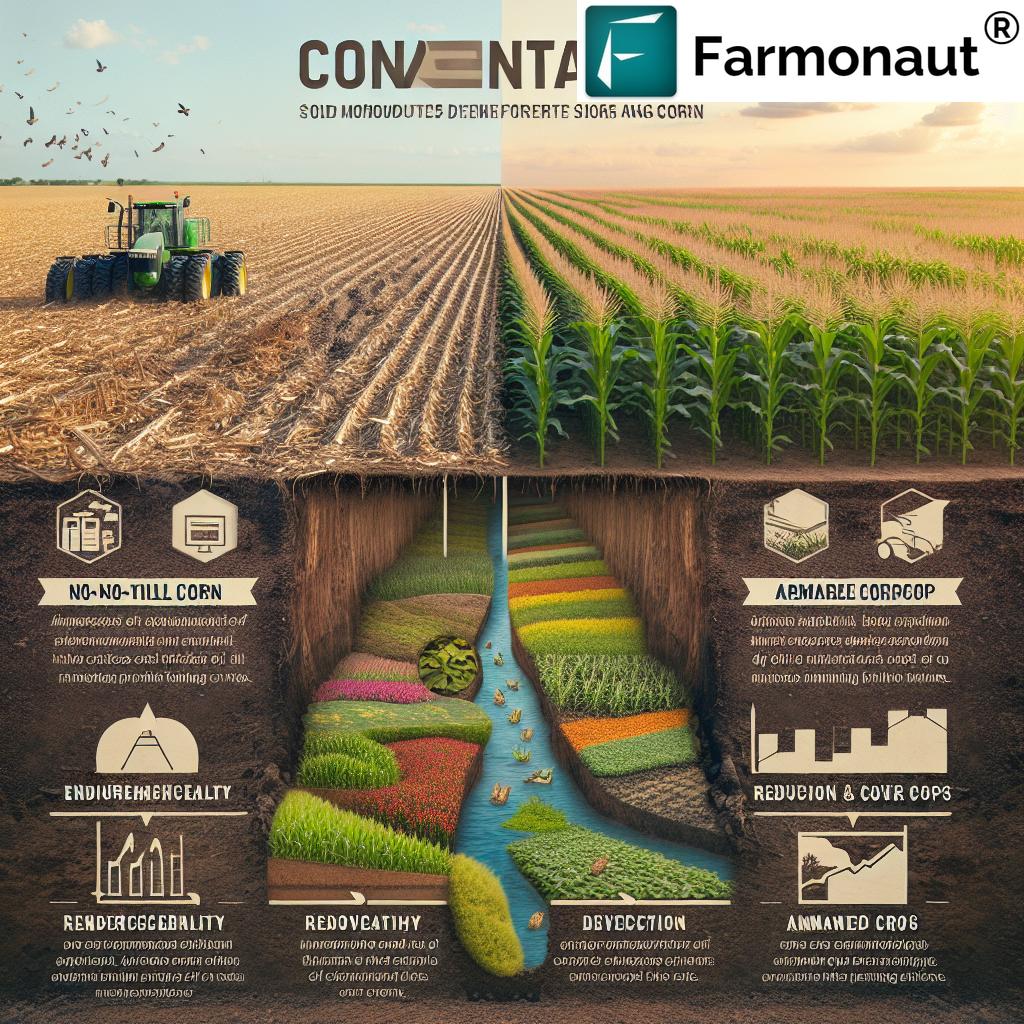
The Role of Technology in Sustainable Corn Farming
As we continue to push the boundaries of sustainable agriculture, technology plays an increasingly vital role. Let’s explore how cutting-edge innovations are shaping the future of Wisconsin corn farming:
Remote Sensing and Satellite Imagery
Remote sensing technologies, particularly satellite imagery, are revolutionizing how farmers monitor and manage their corn crops. Farmonaut’s advanced platform leverages these technologies to provide:
- High-resolution field maps for precise crop health assessment
- Historical data analysis for long-term field performance tracking
- Early detection of crop stress, pests, and diseases
- Accurate yield predictions to inform harvest planning
By utilizing Farmonaut’s satellite-based solutions, Wisconsin corn farmers can make data-driven decisions that optimize resource use and maximize yields sustainably.
Explore Farmonaut’s API for custom integration: Farmonaut API
For developers, check out the comprehensive documentation: API Developer Docs
IoT and Sensor Networks
The Internet of Things (IoT) and sensor networks are bringing real-time data collection to the cornfield:
- Soil moisture sensors for precise irrigation management
- Weather stations for localized climate data
- Crop sensors for real-time plant health monitoring
- Equipment sensors for predictive maintenance and efficiency tracking
These interconnected systems provide farmers with unprecedented insights into their operations, enabling more precise and sustainable farming practices.
Blockchain for Traceability and Transparency
Blockchain technology is enhancing the traceability and transparency of the corn value chain:
- Secure and immutable record-keeping of farming practices
- Enhanced food safety through traceable product journeys
- Improved consumer trust through transparent supply chains
- Facilitation of fair trade practices and sustainability certifications
Farmonaut’s blockchain-based traceability solutions are helping Wisconsin corn growers build trust with consumers and differentiate their products in the market.
Sustainable Corn Farming Practices Comparison
| Farming Practice | Water Usage (gal/acre) | Soil Health Impact | Yield Potential (bu/acre) | Environmental Impact | Economic Benefit ($/acre) |
|---|---|---|---|---|---|
| Conventional Tillage | 3500 | Low | 180 | High | 750 |
| No-Till Farming | 2800 | High | 175 | Low | 800 |
| Precision Agriculture | 2600 | Medium | 190 | Low | 850 |
| Cover Cropping | 3000 | High | 185 | Low | 820 |
| Integrated Pest Management | 3200 | Medium | 188 | Medium | 830 |
Challenges and Opportunities in Sustainable Corn Farming
While the benefits of sustainable corn farming are clear, Wisconsin farmers face several challenges in adopting these practices. However, with every challenge comes an opportunity for innovation and growth:
Challenges:
- Initial costs of transitioning to sustainable practices
- Learning curve associated with new technologies and methods
- Climate variability and extreme weather events
- Market volatility and changing consumer preferences
Opportunities:
- Access to government incentives and support programs for sustainable agriculture
- Potential for premium pricing for sustainably grown corn
- Improved farm resilience through diversified practices
- Enhanced brand value and consumer trust through sustainable certifications
By leveraging technologies like Farmonaut’s satellite-based crop monitoring and AI advisory systems, Wisconsin corn farmers can navigate these challenges more effectively and capitalize on the opportunities presented by sustainable agriculture.
The Future of Wisconsin Corn Farming
As we look to the future, the trajectory of Wisconsin corn farming is clear: sustainability, technology, and innovation will be the driving forces. Here’s what we can expect:
- Increased adoption of precision agriculture and smart farming techniques
- Greater integration of AI and machine learning in farm management
- Development of more resilient and environmentally adapted corn varieties
- Expansion of value-added corn products and markets
- Stronger collaborations between farmers, researchers, and technology providers like Farmonaut
By embracing these trends and continuing to innovate, Wisconsin’s corn industry is poised to remain a leader in sustainable agriculture, ensuring a prosperous and eco-friendly future for generations to come.
Conclusion: A Sustainable Harvest for Wisconsin’s Future
As we’ve explored throughout this blog, the revolution in Wisconsin corn farming is well underway. Through the adoption of smart, sustainable practices and cutting-edge technologies, corn growers across the state are optimizing yields, protecting vital water resources, and securing a prosperous future for agriculture in the Badger State.
From precision agriculture and satellite-based crop monitoring to water conservation techniques and sustainable soil management, Wisconsin farmers are at the forefront of agricultural innovation. These practices not only ensure the long-term viability of corn farming but also contribute significantly to the state’s economy and environmental health.
The journey from field to fuel tank highlights the versatility and importance of corn in Wisconsin’s agricultural landscape. As we continue to face challenges such as climate change and market fluctuations, the resilience built through sustainable practices will be crucial.
Technologies like those offered by Farmonaut are playing a pivotal role in this transformation, providing farmers with the tools and insights needed to make data-driven decisions for sustainable and profitable farming. As we look to the future, the integration of such technologies will undoubtedly accelerate the pace of innovation in corn farming.
In conclusion, the revolution in Wisconsin corn farming is not just about producing more; it’s about producing smarter, more sustainably, and with a keen eye on preserving our natural resources for future generations. By embracing these principles, Wisconsin’s corn industry is setting a standard for sustainable agriculture that will resonate far beyond its borders, ensuring a bountiful harvest for years to come.
FAQs
- What is precision agriculture, and how does it benefit corn farming in Wisconsin?
Precision agriculture uses technology like GPS, sensors, and data analytics to optimize farming practices. It benefits Wisconsin corn farming by improving efficiency, reducing input costs, and minimizing environmental impact. - How does no-till farming contribute to sustainable corn production?
No-till farming reduces soil erosion, improves soil health, enhances water retention, and promotes carbon sequestration, all while maintaining or improving corn yields. - What role does satellite technology play in modern corn farming?
Satellite technology, like that used by Farmonaut, provides real-time crop health monitoring, early detection of issues, and data-driven insights for better farm management decisions. - How are Wisconsin corn farmers addressing water conservation?
Farmers are implementing precision irrigation systems, using drought-resistant corn varieties, and participating in watershed management initiatives to conserve water resources. - What economic benefits do sustainable corn farming practices offer?
Sustainable practices can lead to reduced input costs, access to premium markets, increased land value, and improved long-term farm viability.






